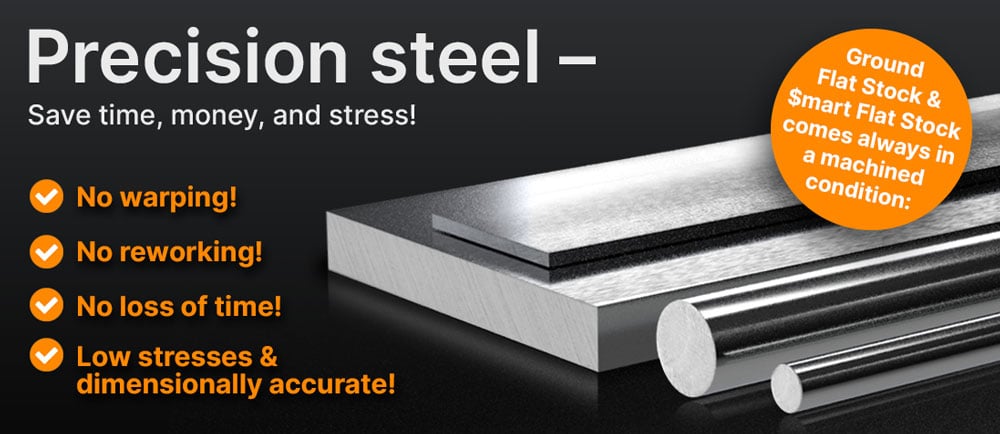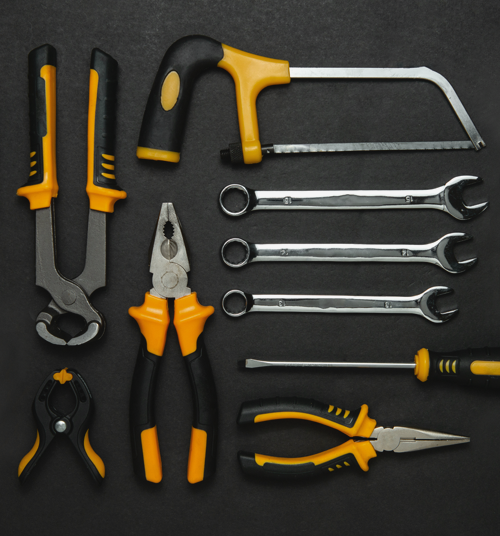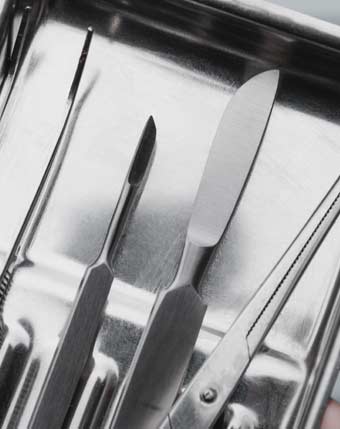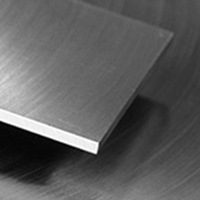Hardened Flat Stock
In summary, it can be said that Hardened Flat Stock is used wherever increased hardness and wear resistance are required compared to standard materials. The hardening itself is a heat treatment process in which the metal is heated to a certain point and then rapidly cooled to achieve the desired properties.
Hardened steel can withstand higher stresses and wear than non-hardened steel, depending on the type of steel and the specific heat treatment, the hardness, strength, and other mechanical properties of the steel can be improved.
Hardened steel can withstand higher stresses and wear than non-hardened steel, depending on the type of steel and the specific heat treatment, the hardness, strength, and other mechanical properties of the steel can be improved.

Your success is our success!
Feel free to contact us.

WHAT IS HARDENED FLAT STOCK USED FOR?
Hardened Flat Stock is used in the industrial and commercial sectors. Particularly due to the increased hardness and strength compared to non-hardened steel, Hardened Flat Blanks are used for many applications.
Applications for hardened flat material include:
• Tool making
• Bearings and sliding guides
• Blades and knives
• Construction industry
• Agricultural equipment
• Gears and mechanical components.
Applications for hardened flat material include:
• Tool making
• Bearings and sliding guides
• Blades and knives
• Construction industry
• Agricultural equipment
• Gears and mechanical components.
HOW IS HARDENED FLAT STOCK MADE?
Hardened Standard Blanks undergo a special heat treatment process to increase the steel's hardness. Hardening generally involves heating the steel to a specific temperature, followed by rapid cooling. This changes the crystal structure of the steel.
Since the hardening process can make the steel more brittle, it often becomes a balancing act between increasing hardness and maintaining toughness. Hard Flat Stock undergoes additional heat treatments (tempering) to enhance toughness and reduce brittleness.
Hard Flat is tempered at least twice and hardened to a specific Rockwell hardness. This hardness varies depending on the chosen steel grade. Subsequently, the thickness of the Hardened Standardized Blanks is finely machined to decarburize the surface.
Since the hardening process can make the steel more brittle, it often becomes a balancing act between increasing hardness and maintaining toughness. Hard Flat Stock undergoes additional heat treatments (tempering) to enhance toughness and reduce brittleness.
Hard Flat is tempered at least twice and hardened to a specific Rockwell hardness. This hardness varies depending on the chosen steel grade. Subsequently, the thickness of the Hardened Standardized Blanks is finely machined to decarburize the surface.

As a Flat Steel Hardened Blanks Supplier, we provide not only standard and stock products but also customized solutions tailored to your needs, to serve the technical and commercial requirements of our customers.
Hardened Blanks are often subjected to extremely high stresses, and no single steel offers properties such as maximum wear resistance, hardness, and toughness. Our steel portfolio includes the most common steel dimensions and grades, to offer an optimal combination of properties and desired size for a specific application.
It can be very frustrating to search for the optimal Steel Grades of Hard Blanks for all your applications. We’ve got the perfect solution for this.


